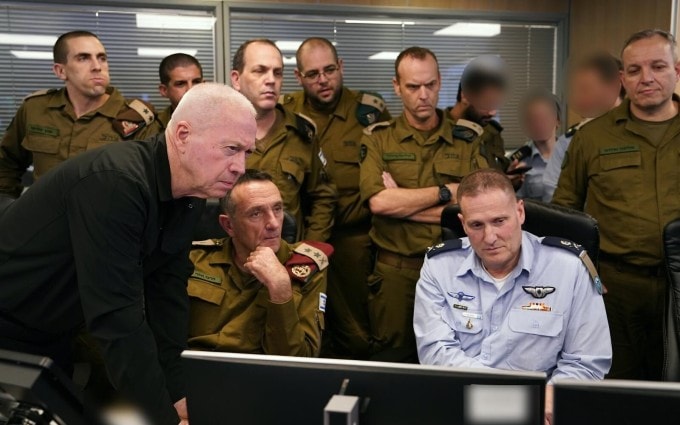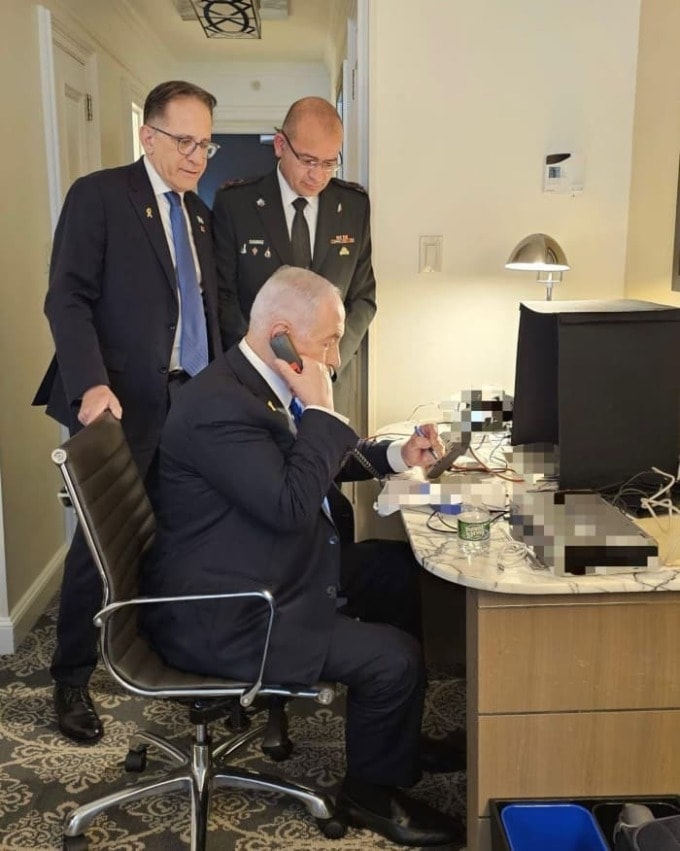The Israeli military had been monitoring Nasrallah for months, planning and deciding to strike and kill the Hezbollah leader in Lebanon when the opportunity came.

The Israel Defense Forces (IDF) announced on September 28 that Hezbollah leader Hassan Nasrallah was killed in a raid the day before on the armed group's stronghold in the Haniyeh area, a southern suburb of Beirut, Lebanon.
The attack targeted a fortified bunker located more than 18 meters underground. Mr. Nasrallah and Hezbollah commanders gathered here to discuss strategies to deal with Israel, according toWall Street Journal.
French NewspaperThe ParisianLebanese security sources said an Iranian spy deep within Hezbollah's ranks informed Israeli officials about the meeting. Tehran has not commented on the information.
"We had real-time intelligence about an operational opportunity that allowed us to carry out the attack," said IDF spokesman Nadav Shoshani. The Israeli military then dropped nearly 80 tons of bombs on the target location, including 85 bunker-buster bombs designed to destroy underground structures. The bombs can penetrate 30 meters of earth or 6 meters of solid concrete. Each bunker-buster bomb weighs about 900-1,800 kg.
"Everything we planned was executed precisely, without any errors, both in intelligence and operations. Everything went smoothly," the commander of the 69th Squadron of the Israel Air Force (IAF) toldTimes of Israel.
Sources familiar with the matter said Israel began preparing for the September 27 operation months in advance. The IDF determined that the way to penetrate the underground bunker was to carry out a series of timed explosions, with one explosion paving the way for the next.
ChannelChannel 12Israel's state-run news agency reported that the plan to assassinate Nasrallah was formulated on September 23 and discussed on September 25. At the first meeting with IDF Commander Herzi Halevi, Mossad foreign intelligence chief David Barnea, Shin Bet internal security chief Ronen Bar and Israeli Defense Minister Yoav Gallant all agreed to support the plan.
Several Israeli ministers objected, including Finance Minister Bezalel Smotrich. Smotrich and Regional Cooperation Minister David Amsalem were concerned that the move would affect the ongoing IDF operation in Gaza. The Israeli cabinet finally gave the plan the green light on the evening of September 26.
On September 27, Mr. Halevi spoke with Mr. Gallant. "We have what we need and can launch the operation. We know Nasrallah is in that bunker," Mr. Halevi said.
Mr. Gallant and Mr. Halevi called Prime Minister Benjamin Netanyahu. The Israeli leader was in New York, preparing to address the United Nations General Assembly. The two defense officials recommended that Mr. Netanyahu authorize the operation, and he did.
F-15Is of the 69th Squadron took off from Hatzerim Air Base in southern Israel. Half of the pilots were reservists. As the sun set over the Middle East on September 27, the IAF jets dropped their bombs. At around 6:30 p.m., a series of loud explosions rang out in the Lebanese capital.
"We attacked Beirut, we attacked Daniyeh. We knew who we were targeting," said the commander of the 69th Squadron.
Brigadier General Amichai Levin, commander of the Hatzerim base, added that the "very complex" mission had been planned for a long time.
"No missiles were fired at the aircraft during the operation. The crew was not in danger," he said. "Dozens of rounds hit their targets within seconds with high precision, which is essential when targeting such deep underground areas."
The Israeli Prime Minister's office released a photo of Mr. Netanyahu on the phone in New York, "giving the green light" for the attack.
A US official said on September 27 that Washington was only informed after Israeli fighter jets had already taken off and the operation was underway.
Senior officials in President Joe Biden’s administration were outraged by the US’s efforts in recent days to restart talks aimed at a ceasefire in Lebanon and Gaza. The US and France had proposed a 21-day ceasefire, which Netanyahu rejected.
America feels "cheated",Channel 12description. US Defense Secretary Lloyd Austin expressed concern in a phone call with his Israeli counterpart Gallant on September 27.

The Beirut attack highlights a key issue in Gaza. Israel is willing to use powerful bombs to achieve military goals, such as taking out Hamas and Hezbollah commanders, in urban areas, regardless of the risk of civilian casualties. In July, Israel reportedly dropped eight 900kg bombs on Khan Younis in southern Gaza to kill Mohammed Deif, the head of Hamas’s armed wing.
"What Israel wants to demonstrate is that they are serious about stopping the persistent threat from Hezbollah and are willing to take significant risks to do so," said Joseph Votel, former commander of US forces in the Middle East. "The power of the strike is calculated to ensure they have the best chance of success in their effort to take out Nasrallah."
VN (synthesis)